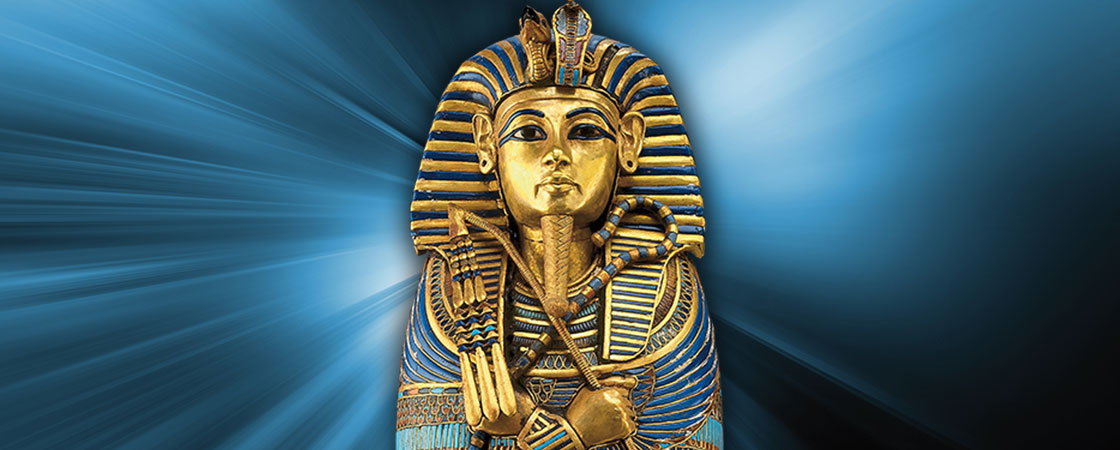He is the king of ancient Egypt. At only 9 years old, he rules over an empire that stretches across hundreds of miles and has millions of inhabitants.
As befits a pharaoh, his head is shaved. When he walks, his heavy gold jewelry clanks together, a kind of soundtrack to announce his power and wealth. At night, his servants wave giant fans over him so the crushing heat does not keep him awake. Everywhere he goes, people bow to him. They say he can read the minds of the gods.
But his life isn’t all glamour. He has an empire to run and it is one of the most powerful in the world. That’s a lot of pressure for a kid. Fortunately, he has advisers to closely guide him.
But then, tragedy strikes.
When he is about 18, his life comes to a mysterious end. All of Egypt mourns his passing. His body is taken to the priests, who spend 70 days performing the sacred ritual of mummification.
After a grand funeral procession, he is buried in a tomb in the Valley of the Kings, where many pharaohs before him have been laid to rest. Buried with him is a trove of treasures—jewels, statues, food, weapons—everything he might need in the afterlife.
But what no one could know is that he will have an afterlife here on Earth. Thousands of years from now, his name will be spoken around the world. Kids will study him in school. Researchers will dedicate their lives to unriddling the mystery of his life and death. Millions will travel great distances to gaze upon his treasures.
His name is Tutankhamen.
And he will be immortal.
He is the king of ancient Egypt. At only 9 years old, he rules over an empire that stretches across hundreds of miles and has millions of people.
As is suitable for a pharaoh, his head is shaved. When he walks, his heavy gold jewelry clanks together, a kind of soundtrack to announce his power and wealth. At night, his servants wave giant fans over him so the crushing heat does not keep him awake. Everywhere he goes, people bow to him. They say he can read the minds of the gods.
But his life isn’t all glamour. He has an empire to run, and it is one of the most powerful in the world. That’s a lot of pressure for a kid. Fortunately, he has advisers to closely guide him.
But then, tragedy strikes.
When he is about 18, his life comes to a mysterious end. All of Egypt mourns his passing. His body is taken to the priests, who spend 70 days performing the sacred ritual of mummification.
After a grand funeral procession, he is buried in a tomb in the Valley of the Kings, where many pharaohs before him have been laid to rest. Buried with him are treasures: jewels, statues, food, weapons—everything he might need in the afterlife.
But what no one could know is that he will have an afterlife here on Earth. Thousands of years from now, his name will be spoken around the world. Kids will study him in school. Researchers will dedicate their lives to solving the mystery of his life and death. Millions will travel great distances to see his treasures.
His name is Tutankhamen.
And he will be immortal.

